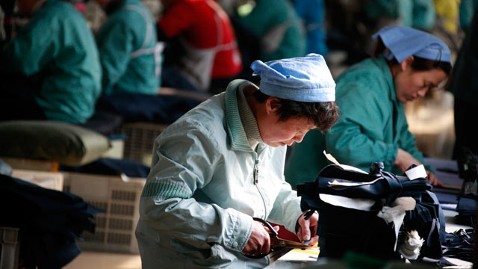Companies Move Manufacturing Jobs Back to America
 Image Credit: AFP/Getty Images
Image Credit: AFP/Getty Images A factory sits empty. It's not in the Rust Belt, nor is it part of a manufacturing exodus that has cost the U.S. thousands of jobs. It is a factory in Shenzhen, China, and the American company that once employed Chinese workers is now packing up, coming home and bringing the jobs with them.
John Higgins, CEO of Neutex, an LED lighting company, said it will be cheaper to manufacture in Houston.
"I've gotten in fights, I've gotten in arguments with CEOs on planes telling me what an idiot I am for coming back," Higgins told ABC News.
A decade ago, a factory worker in China made 58 cents an hour. Today, wages are more than $ 3.00 and there are predictions of $6.00 an hour by the year 2015. It may sound cheap, but some economists argue when you factor in productivity those wages add up. The Boston Consulting Group argues the American worker combined with technology in the U.S. makes the American worker more than three times as productive as the Chinese worker.
"When you factor in that the American worker is nearly four times as productive, that math quickly adds ups," said Hal Sirkin, senior partner at the Boston Consulting Group.
Master Lock in Milwaukee, Wis., sent as many as 1,000 jobs overseas in the 1990s and just brought back the first 100. Nat Labs is doing the same, it's now making dental molds in Florida instead of China and hopes to hire 300 people.
The story is true in Detroit too, where GalaxE.Solutions, a custom software development company, decided to move in, taking over an office building that had been vacant for nearly a decade.
Detroit, of course, is much closer to the company's American clients than are the workers in Bangalore, India.
Even though a worker in Bangalore makes $20,000 a year and an American worker doing the same job makes between $40,000 and $60,000, CEO Tim Bryan said once other costs are factored in, the economics make balance out.
"This work is coming back to the U.S.; there's no stopping it," he said.